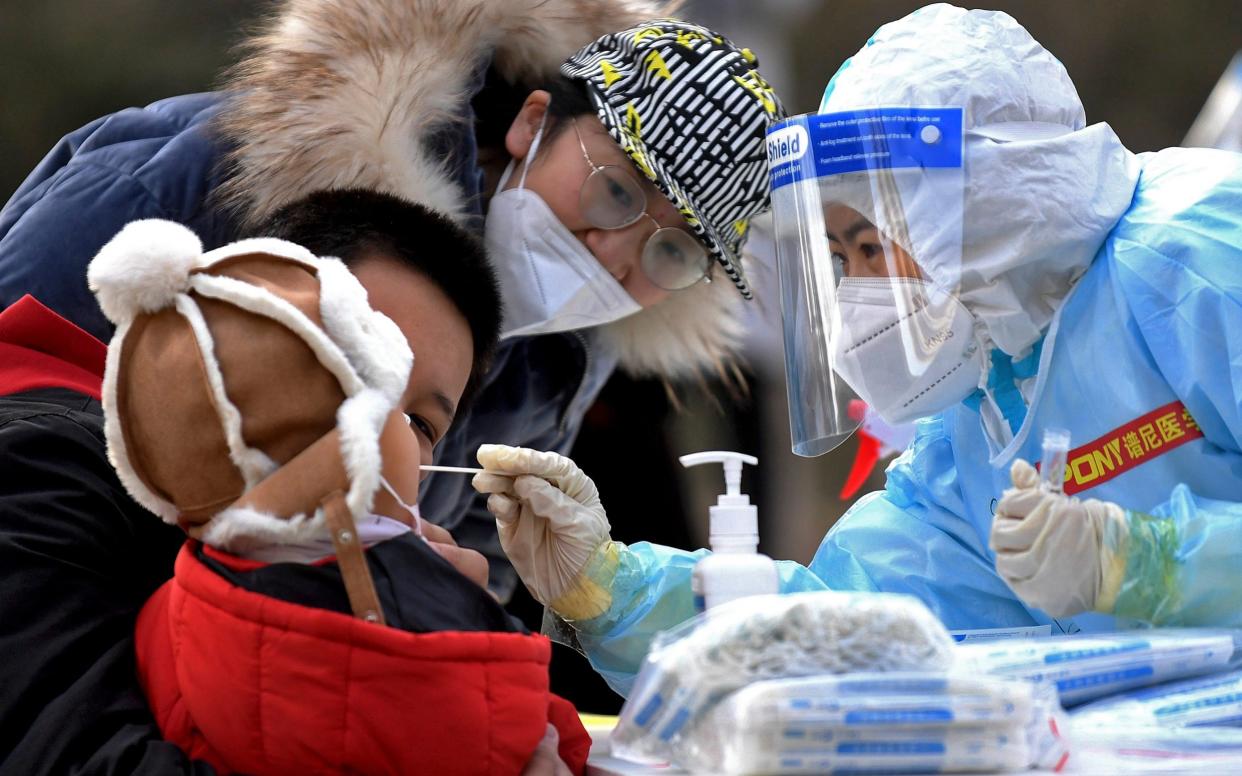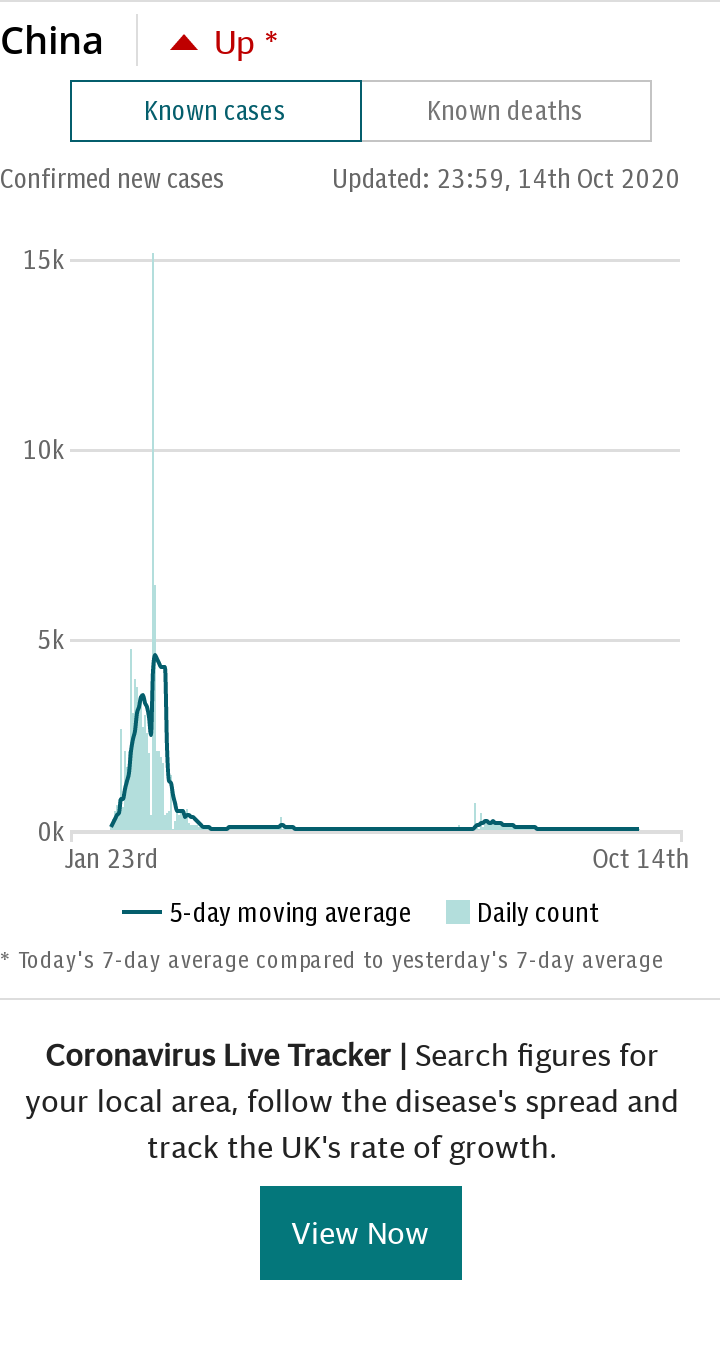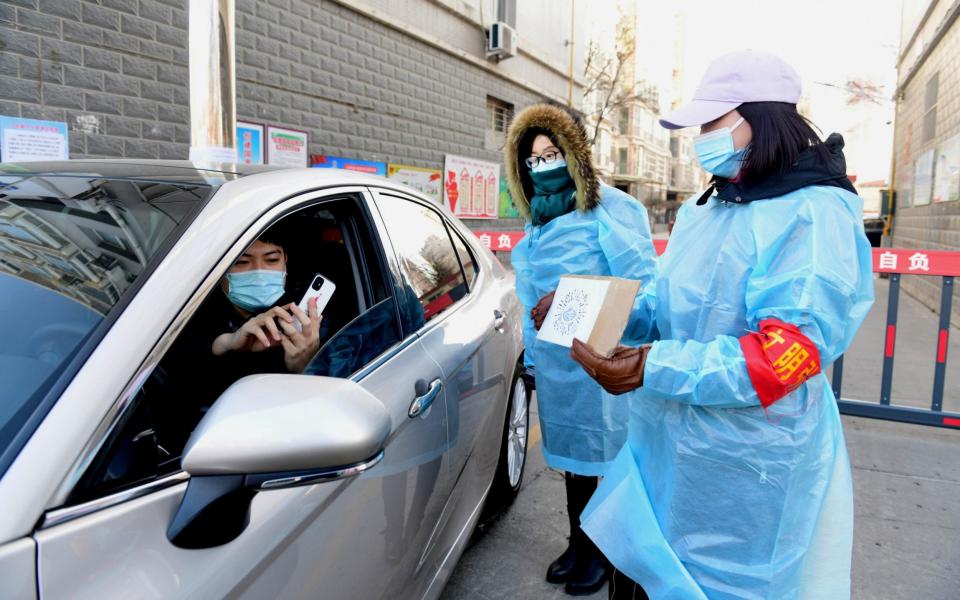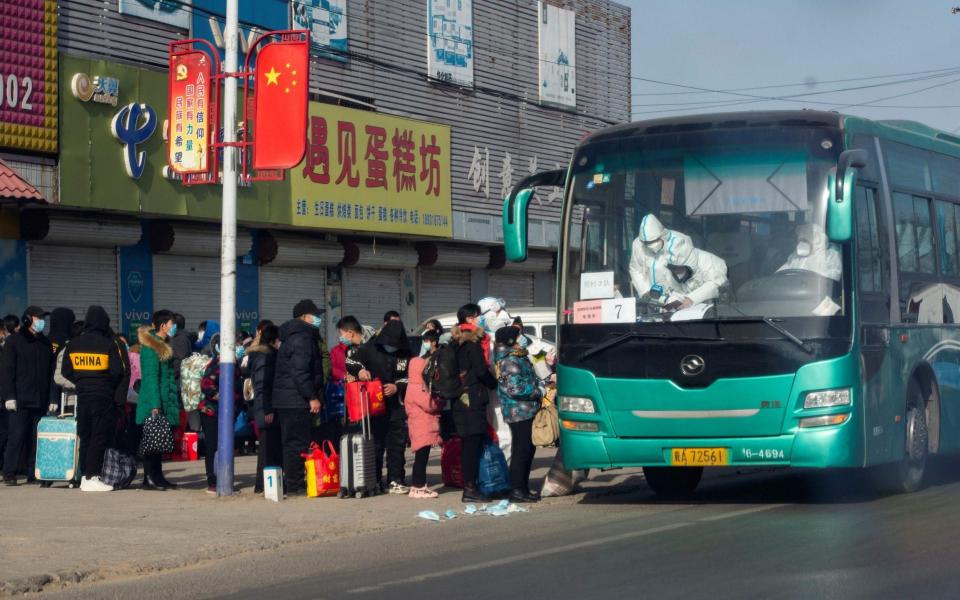China goes into 'wartime mode' after 103 new Covid cases detected in city of 11 million

A year after the coronavirus first erupted in Wuhan, China has declared “wartime mode” and has locked down another city of 11 million to combat a resurgence of infections.
Authorities in Shijiazhuang, a city in northeastern China, have barred people and vehicles from leaving in efforts to curb infection spread after the country reported its biggest one-day increase in five months with 103 new cases.
The city has been among the hardest hit after a handful of infections first cropped up in Beijing mid-December and spread across at least four surrounding provinces, including Hebei, where Shijiazhuang is located.
Since then, China has discovered 727 infections - although hundreds of asymptomatic cases have also been found, which aren't included in the official daily tally of cases.
Officials are taking no chances, especially in the weeks leading up to Chinese New Year on Feb 12, a major holiday and travel period that experts say likely exacerbated the spread of infection last year.
China has fine-tuned its emergency response measures, having battled a series of subsequent outbreaks since initial infections emerged in Wuhan last year, rolling out its playbook immediately even if only a few cases are found.
Once infections are discovered, officials move immediately to seal residential compounds, urban districts, or at times, entire cities. Medical workers conduct mass testing, sometimes by going from home to home to swab residents. Detailed contact tracing is also triggered to identify and quarantine those who have been exposed to people testing positive for coronavirus.
That blueprint is being unleashed in Shijiazhuang. Over the last few days, officials have set up thousands of testing stations, which include buses converted into mobile units that can travel inside residential compounds.

A few hundred medical staff have been dispatched from other cities to assist with testing – the aim is to test the entire city within days.
Authorities have banned gatherings, blocked passengers from entering the city’s main rail station, and closed long-distance bus stations. Police have set up checkpoints to stop cars from travelling down key highways that link to neighbouring provinces.
Travel within Shijiazhuang itself is also restricted. Residents in high-risk districts aren’t allowed to leave those areas.
One local hospital has also been emptied, with non-Covid patients moved to other facilities in order to focus solely on treating those testing positive for coronavirus. Three other hospitals have been designated as back-up facilities to admit patients if necessary.
Housing compounds in the city now only have a single exit and entrance in order to better ensure residents are abiding by quarantine restrictions.

“I feel like I am seeing again what happened last year in Wuhan, but now we are more experienced and everything will be more smooth. Shijiazhuang, add oil!” wrote one person online, using a phrase that means "keep going".
Chinese officials are racing to inoculate 50 million people ahead of Chinese New Year. In Shijiazhuang, the local centre for disease control and prevention approved 28 locations in the city to administer vaccines, though only those in priority groups, such as Chinese travelling abroad, are able to receive them.
Part of China’s success has lain in its ability to unleash Mao-era grid-style policing, relying on neighbourhood party committees to enforce quarantines and residents to rat on each other for not wearing face masks.
Those quarantining at home are often subject to severe restrictions to ensure compliance. Alarms placed on people’s doors ping neighbourhood guards if they’re opened, even for a second. In other instances, security cameras or sticker seals have been placed at the entrance of homes to enforce quarantines.
Central and local government officials have engaged in a no-tolerance policy, detaining people who don’t comply with face mask or social distancing measures.

In far western Xinjiang, an outbreak last summer was met with an outsized response – one that residents criticised and surmised was part of a wider crackdown on the Muslim minority groups that live in the region.
Accounts surfaced of people being chained to pillars, physically barricaded in their homes or forced to consume leftover herbal medicines from communal vats, causing – rather than curing – health complications.
“A door seal is not enough, they need to put a steel bar across the front of residents’ doors,” wrote one user. “If there were accidents like earthquakes or fire, where can we escape to? From the window? Now that even our basic personal safety cannot be guaranteed, why do we care about fighting the virus?”
“Some compounds even mandate residents to consume them in front of the officials or record a video of them taking the meds,” wrote one person online. “Is it reasonable that the residents don’t have any right to choose?”

